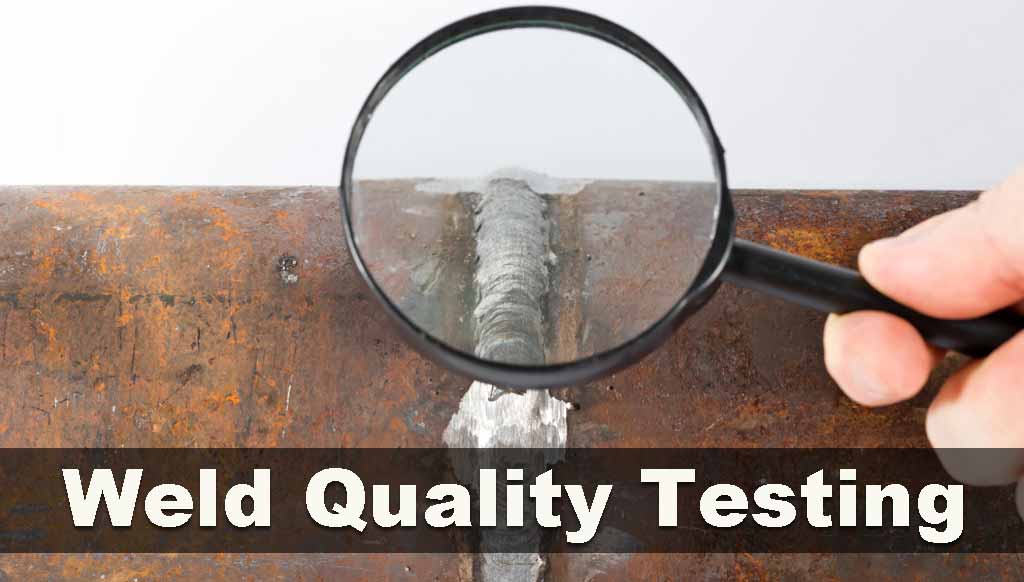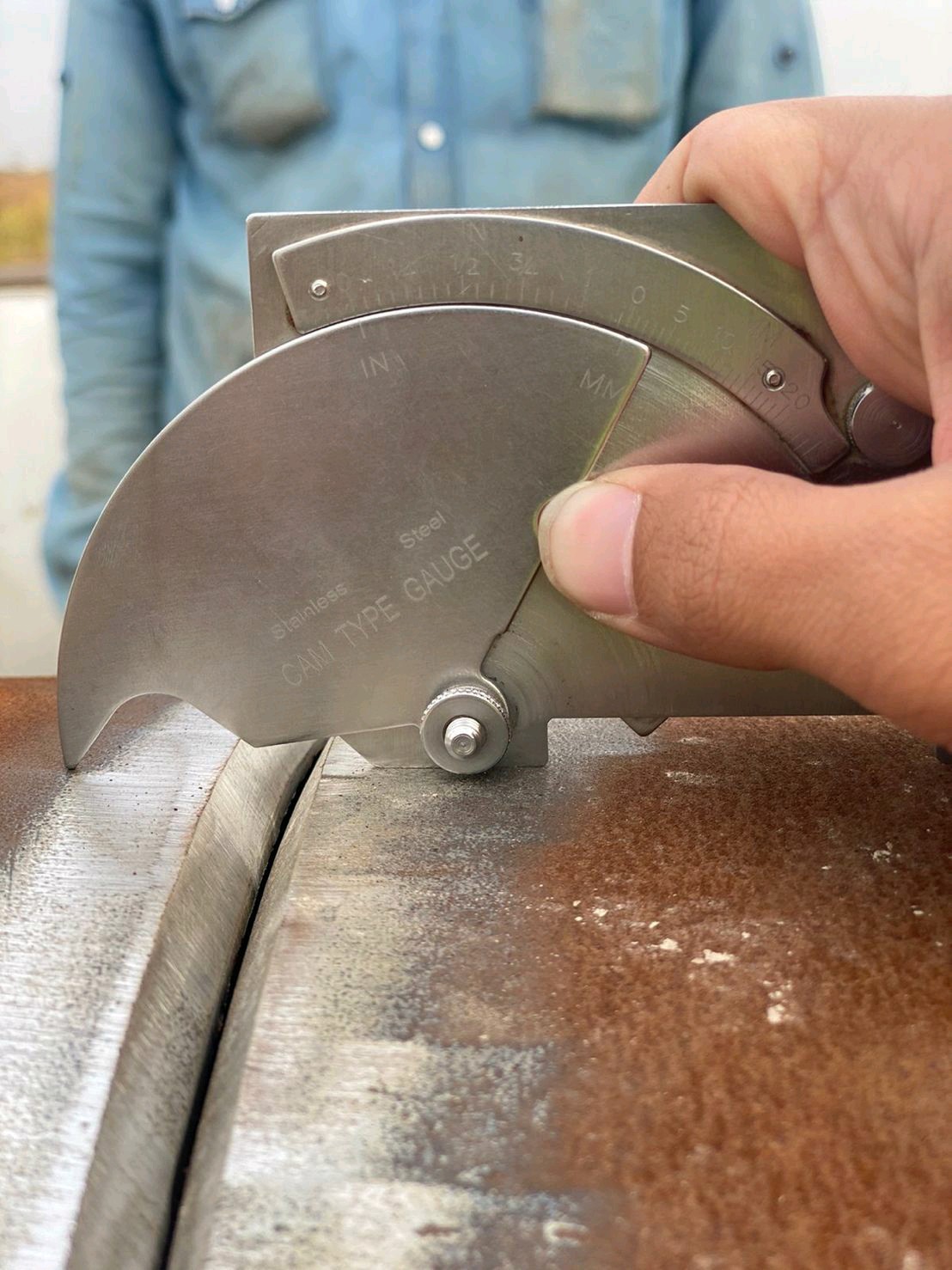Discovering Advanced Equipment and Approaches for Accurate Welding Evaluation
In the realm of welding examination, the pursuit of accuracy and dependability is paramount, spurring the development of innovative tools and techniques. Technologies such as phased selection ultrasonic testing and electronic radiography are revolutionizing defect discovery, offering exceptional accuracy in identifying welding imperfections. Laser scanning advancements and automated assessment systems, equipped with fabricated knowledge, are redefining the landscape by decreasing human mistake and improving security actions. As these innovative strategies continue to develop, they assure not just to transform evaluation practices but also to elevate appealing inquiries concerning the future of high quality guarantee in industrial applications.
Ultrasonic Testing Innovations
Ultrasonic testing innovations regularly represent the center of developments in welding inspection innovations. These innovations have actually considerably enhanced the capacity to identify and evaluate stoppages within bonded structures, ensuring boosted honesty and security - Welding Inspection Madison. Ultrasonic screening utilizes high-frequency sound waves to permeate products, providing thorough info about inner functions without triggering damages. The most up to date advancements in this field have actually concentrated on boosting accuracy, speed, and the capability to analyze complicated data.

Additionally, advancements in software formulas for information evaluation have actually improved the accuracy of issue detection and sizing. Automated ultrasonic screening systems currently provide high-resolution imaging, enabling in-depth assessments of weld high quality. These systems are frequently incorporated with sophisticated visualization devices, which promote the interpretation of results.
Radiographic Examination Methods
While ultrasonic screening advancements have actually established a high standard in non-destructive evaluation, radiographic assessment strategies continue to play an indispensable role in welding assessment by offering distinct insights right into product stability. Radiographic screening (RT) employs the usage of X-rays or gamma rays to penetrate materials, producing a radiograph that visually stands for the inner structure of a weld. This imaging capacity is important for finding subsurface issues such as porosity, incorporations, and cracks that may not be visible with surface area inspections.
The procedure entails placing a radiation resource on one side of the weld and a detector on the opposite side. Variants in product density and thickness affect the attenuation of the rays, creating a contrasting image that exactly defines flaws. RT is specifically advantageous for inspecting complicated geometries and thick sections where various other approaches might fail.
In spite of its efficiency, radiographic inspection should be performed with strict adherence to safety and security methods because of the hazardous nature of ionizing radiation. The interpretation of radiographs needs skilled employees, as the top quality of the evaluation directly influences the integrity of the examination. As a result, ongoing advancements in electronic radiography are enhancing photo clearness and interpretation efficiency, reinforcing RT's essential function in guaranteeing weld top quality.
Laser Scanning Advances
Welcoming laser scanning innovation in welding examination has revolutionized the analysis of weld top quality and honesty. This innovative technique offers a non-contact, high-resolution means of capturing in-depth 3D data of weld surface areas. her explanation Unlike typical examination methods, laser scanning offers rapid data acquisition, substantially enhancing the performance and accuracy of weld analyses. The technology utilizes laser light beams to create exact 3D versions, which are vital for thorough evaluation of weld dimensions, surface area irregularities, and possible defects.
Laser scanning developments have actually caused considerable renovations in characterizing and spotting surface flaws such as porosity, lack of fusion, and damages. The high-resolution information makes it possible for inspectors to do thorough analyses, making sure that welds satisfy rigid market requirements. This method sustains the advancement of digital documents, facilitating lasting high quality assurance and traceability.
In addition, laser scanning technology incorporates effortlessly with software application services developed for automated problem detection and assessment. The resultant data can be conveniently shared and evaluated, promoting joint decision-making processes. As industries continue to demand greater requirements for weld top quality, laser scanning remains at the leading edge, providing unmatched accuracy and efficiency in welding examination.
Automated Inspection Equipments

Automated assessment systems supply the benefit of consistency, getting rid of human mistake and subjectivity from the inspection process. They are designed to operate in different environments, from production floors to remote area sites, making certain thorough insurance coverage. Welding Inspection Madison. These systems can be programmed to abide by certain welding requirements and criteria, providing in-depth reports and paperwork for top quality control objectives
In addition, the assimilation of cloud-based systems promotes the storage and evaluation of huge amounts of assessment data. This allows pattern evaluation and anticipating upkeep, enabling makers to deal with possible issues prior to they rise. The adoption of automatic examination systems is an essential move in the direction of enhancing the integrity and performance of welding processes in commercial applications.

Enhancing Safety and Effectiveness
A considerable aspect of improving safety and security and performance in welding inspection hinges on the integration of innovative technologies site web that improve operations and reduce risks. The adoption of advanced non-destructive screening (NDT) methods, such as ultrasonic screening, phased array ultrasonic screening (PAUT), and radiographic screening, plays a crucial duty in ensuring structural integrity without jeopardizing the safety and security of the personnel included. These strategies permit thorough inspections with marginal downtime, reducing prospective dangers connected with typical approaches.
Additionally, the execution of real-time data analytics and device knowing algorithms has transformed the way examination information is translated. By employing predictive analytics, prospective problems can be identified before they show up right into important failings, ensuring timely interventions and upkeep. This proactive strategy dramatically boosts functional effectiveness and security Home Page in welding procedures.
Moreover, remote evaluation technologies, including drones and robot spiders furnished with high-resolution electronic cameras, make it possible for assessors to assess hard-to-reach locations without exposing them to unsafe conditions. This not only improves evaluation accuracy but additionally reduces human threat. By leveraging these advanced devices and techniques, markets can attain higher security standards and operational efficiency, inevitably resulting in more lasting and trusted welding inspection practices.
Conclusion
The combination of innovative tools and approaches in welding examination significantly boosts flaw detection and makes sure architectural honesty. Welding Inspection Madison. Technologies such as phased array ultrasonic screening, electronic radiography, and laser scanning boost flaw characterization, while automated examination systems and AI reduce human error. Remote technologies promote secure analyses in harmful atmospheres, promoting an aggressive upkeep approach. These developments not only increase evaluation efficiency yet also contribute to improved security and quality control in industrial welding applications.

Ultrasonic testing technologies often stand for the leading edge of developments in welding inspection innovations.While ultrasonic testing advancements have set a high criterion in non-destructive evaluation, radiographic assessment methods proceed to play an integral duty in welding inspection by providing distinct insights into material integrity.Welcoming laser scanning innovation in welding evaluation has changed the assessment of weld high quality and stability. As industries proceed to demand higher criteria for weld high quality, laser scanning stays at the leading edge, offering unrivaled precision and performance in welding evaluation.
Automated assessment systems offer the advantage of uniformity, removing human mistake and subjectivity from the assessment procedure.